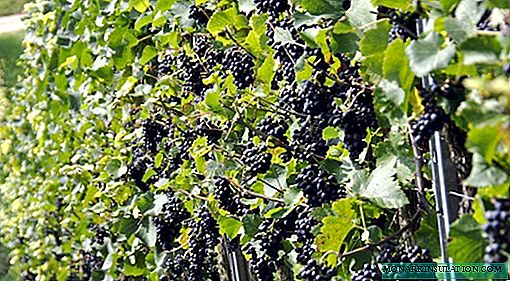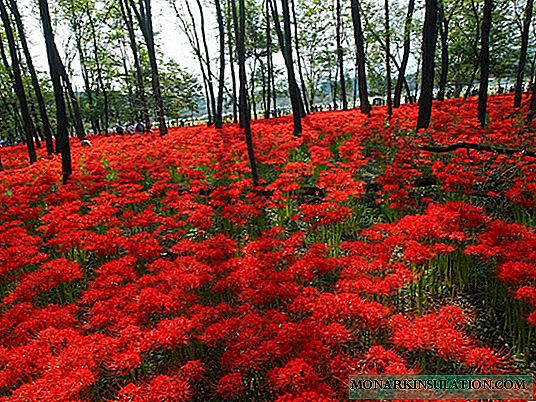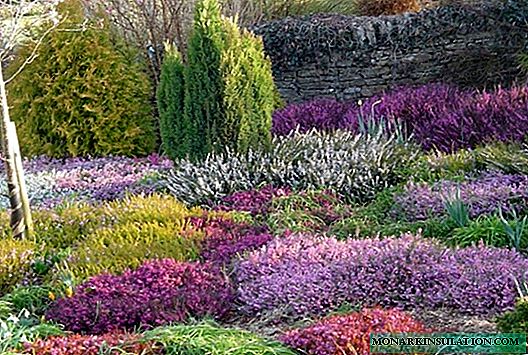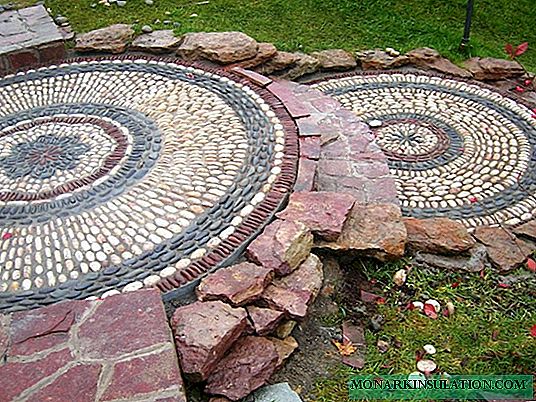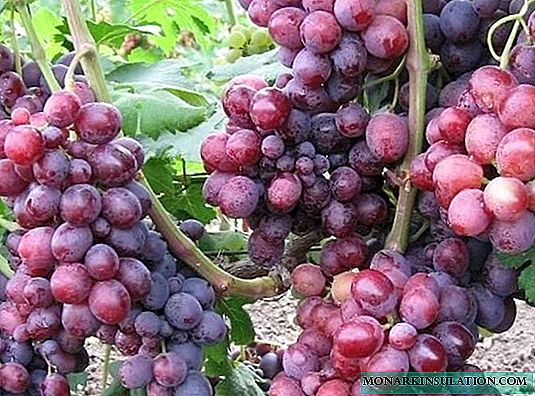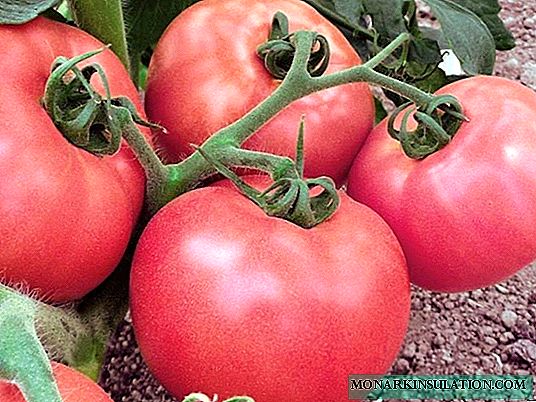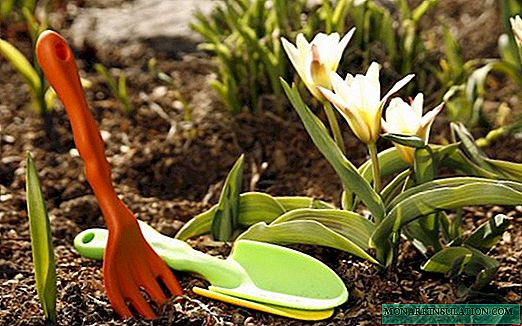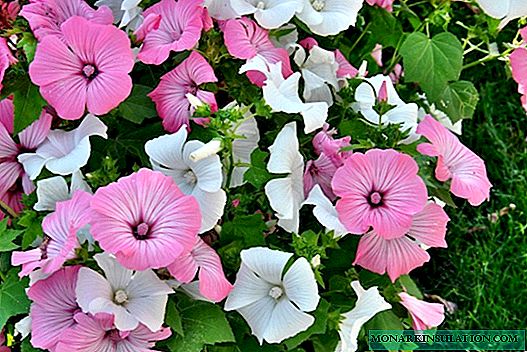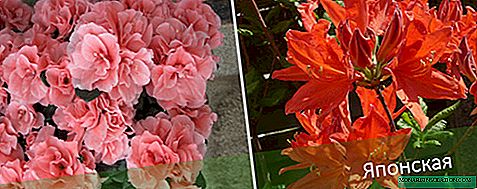Azalea belongs to the genus Rhododendrons, the Heather family. From Greek - rosewood. The birthplace of this plant is China, India, the Caucasus. In total there are more than 1000 varieties. Some of them are grown in apartments, gardens.

Azalea Description
The flowers are outwardly similar to overly open rosebuds, bisexual, solitary or collected in inflorescences. They are simple, terry, fringed. A highly branched bush grows small. Leaves are underdeveloped, obovate.
Azalea is represented by:
- shrubs;
- pyramidal and ampelous plants;
- deciduous species;
- evergreen bushes.
The main types of azaleas for the home
Caring for a plant at home is not easy. Only 2 types of azaleas adapted to the content in an artificial environment:
| Title | Description | Flowers | Leaves |
| Indian (Sinsa) | Indoor variety. In height up to 50 cm. Stems with a hard, red-brown pile. | White, scarlet, colorful. Open buds at the same time. | Ovoid, on shortened petioles. On the inside there are soft hairs. |
| Japanese | Usually grown in garden areas. Reaches 40-60 cm. A distinctive feature is winter hardiness, withstands up to -20 ° C. | From salmon to deep red. Blossom with leaves at the same time, sometimes earlier. | Up to 5 cm. |

Varieties of indian azalea
Azaleas adorning living quarters are hybrids of the Indian variety. Common varieties:
| Title | Description | Flowers |
| Snowflake | Strongly branching shrub. Resistant to fungal and bacterial infections. | Non-double, purple-pink with brick dots. |
| Albert elizabeth | Dissolves buds at the end of winter. | Large, snow-white or light pink, with a frame, corrugated edges. |
| Celestine | Spreading shrub blooming from the beginning of spring. | Non-double, bright raspberry. |
| Starfish | The bush is compact in size with dark green, shaggy leaves. | Snow-white with raspberry stains at the base. |
| Madame Joly | Deciduous hybrid. | Simple, pinkish, orange-yellow at the base. |
| Czardas | Gives buds in April. Demanding on lighting. With a lack of it loses its decorative appearance. | Creamy yellow, terry, with a pleasant aroma. |
| Satan | Up to 1.5 m. | Fiery red with yellow highlights. |
| Glory | Forms a crown in the shape of a ball. | White, with two corollas. |
| Golden lights | It blooms profusely, is resistant to frost, grows up to 1 m. | Golden yellow. |
| Azure | A undersized shrub with many branches. | Saturated blackberry shade with bright raspberry blotches on the inside. |
| Koichiro Wada | Variegated hybrid. It is steady against frosts, unpretentious in leaving. | Unopened crimson-pinkish, brighten during flowering. |



Types of azaleas for the garden
The following varieties of rosewood are usually grown in summer cottages and garden plots:
| View | Description | Flowers | Bloom |
| Homebush | Reaches 1 m. | Terry, pink and raspberry. Resistant to frost. | May June. |
| White | Visually similar to a jasmine bush. | Terry and simple, whitish or light pink. | From May. |
| Nabucco | Up to 200 cm, with a spreading crown. | Wide open, bright red. | Summer. |

Acclimatization of azaleas at home after purchase
Full adaptation of the azalea to new conditions will occur when it fades and gives new shoots. After the purchase, the flower can not be placed next to heating appliances, it does not tolerate heat. The plant needs high humidity, not lower than that which was in the store. During the acclimatization period, the bush does not need to be fed: there are enough nutrients in the transport soil.
Get used to new conditions will help spraying Epin. It activates protective functions, improves stress resistance and immunity of the bush. If the plant began to fade and discard leaves, it needs a transplant. How to produce it is described in the chapter “Flower Formation and Transplantation”.
Home Azalea Care
In order for the plant to bloom and not lose its decorativeness, it is necessary to provide comfortable conditions that are individual for each season:
| Factor | Spring Summer | Autumn winter |
| Location / Lighting | Eastern or northern window sills. Scattered light, without exposure to direct ultraviolet rays. | Keep away from heaters. Additional lighting with phytolamps. |
| Temperature | No more than +20 ° С (it is difficult to achieve such an indicator without an air conditioner). | In autumn + 10 ... +12 ° С. In winter + 15 ... +18 ° С. |
| Humidity | High, not less than 85%. It can be provided in the following ways:
| |
| Watering | To produce bleached water without chlorine. Regularly spray the soil or place a few ice cubes on top, do not allow the earth to dry out. If the soil is still dry, put the pot in a bucket of water for 2-3 hours. During this time, the root system will absorb the necessary volume of fluid. | |
| Top dressing | Weekly. | |
| Nitrogen-containing fertilizers. | Phosphorus-potassium mixtures. | |
Formation and transplantation
Pruning is done immediately after the flowers wither. All inflorescences, weakened and overgrown shoots are removed. Also pinch new processes over the 2nd pair of real leaves.
Young specimens are transplanted every season, mature plants every 3-4 years. Do it by transshipment:
- Carefully remove the bush with an earthen lump.
- Put in a new pot.
- Fill the void with earth. The substrate should be acidic, well permeable to moisture and air.
- Do not over-moisten the soil.
Azalea breeding
The flower is propagated by cuttings:
- With a healthy, semi-lignified branch, cut the stalk 5-8 cm. It is preferable to do this in the spring.
- Put for a couple of hours in heteroauxin.
- Plant to a depth of 1.5-2 cm.
- Cover with polyethylene to create greenhouse conditions.
- Clean the shelter daily for ventilation and spraying.
- Keep at +25 ° C.
- After emergence (after 3-5 weeks) transplant.
Azalea is also bred by dividing the bush. This can only be done if the plant is healthy and strong. You need to act with caution so as not to damage the rhizome. After planting, provide enhanced care.
Propagation by seeds is a difficult and long process. It can only be experienced gardeners and breeders.
Rules for the care of azalea in the garden
When planting azaleas in open ground, the following recommendations should be observed:
- During the growing season, moisten the soil abundantly, the earth should not dry out. By autumn, reduce the number of watering. Pour water into the furrow surrounding the bush, and not under the foundation itself.
- When forming greens and buds, spray daily, during flowering, stop so that dark spots do not appear on the petals.
- Periodically update the layer of mulch around the plant to saturate the soil with oxygen, prevent the appearance of weeds.
- In the period of active growth, weekly make top dressing (without lime, chlorine, wood ash).
- Water once a month with the addition of a few drops of citric acid.
- At the end of flowering, prune.

Mistakes in azalea care, disease pests
If the content is inadequate, azalea can get sick, insects will start to eat it. Signs and methods of treatment:
| Manifestation | Causes | Remedial measures |
| The foliage falls. |
| Create the necessary conditions of detention. |
| Spider mite. | Spray with soapy water or with Actara preparations, Fitoverm. | |
| The greens turn yellow. | The defeat of chlorosis. |
|
| The flower withers, brown plaques on the plates, small insects are visible. | Shield. |
|
| Leaves are drying. |
|
|
| Greens dries during the formation of buds. | Lack of moisture. | Moisten the substrate more often. |
| The plates turn black. |
|
|
| The bush withers, blooms poorly or does not give buds at all. | Bad soil. | Transplant into another land, apply fertilizer. |
| The tips of the leaves become brown. | Watering with hard water. | Use a soft, settled liquid. |
| Greens turn yellow and wilt. The stems and roots rot. | Fusarium |
|
| Red-brown or brown spots appear on the leaves, eventually passing to the entire aerial part. | Septoria |
|
| Ash gray or brown spots are visible on the inside of the plate. | Phyllosticosis. |
|
| At the bottom of the leaf and at the base of the stems there is a snow-white coating and clumps resembling cotton wool. | Mealybug. |
|
| White butterflies flying at the slightest touch. | Whitefly |
|

